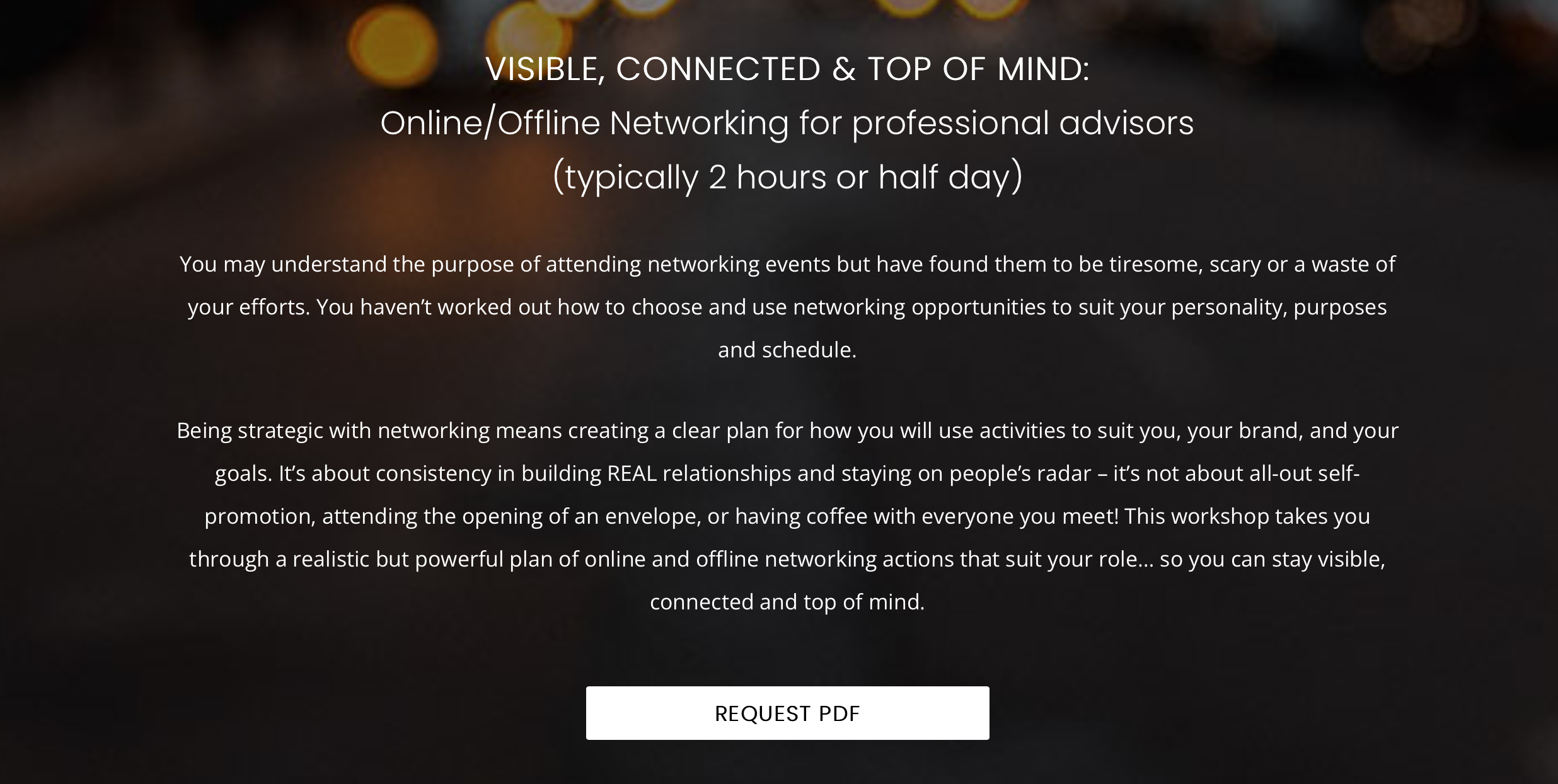Intentional Trust-Building in Business – Part 2 DURING
In this series of 3 articles, I am exploring the question: How can we be intentional about building trust in business?
In Part 1 I introduced concepts from some top thinkers in the areas of trust-building in business, and I listed out the key steps to get right before the business conversation with a new prospect, in light of what my experience has taught me works best. Here in Part 2, let’s turn to what works in building trust during the conversation.
Intentional Trust-Building in Business Part 2: DURING the conversation
Often, you only get one chance to get in front of the decision-maker for a potential new client. What you do in that 30-60 minutes can make all the difference. It can feel like a lot of pressure, and yet it’s vital to bring clarity and confidence to these conversations, letting the prospect know they are in expert hands.
I have found that becoming skilled at business development conversations with corporate clients is a personal process of deep learning and reflection, in order to find what works for you. Put simply, these are the key components I have found to be important in building trust during the conversation:
- Taking time to connect: We are human beings first, so having a simple and honest way to get to know each other, find commonalities and build rapport is an important first step. Rather than have a standard set of ‘ice-breaker’ questions, I like to use my knowledge or research on that person to open with a question that is relevant to them and interesting to talk about; I then find the most important key to connecting is to really listen.
- Coming in with clarity: It’s vital to have a loose structure for where you want the conversation to go and to ensure you gain the valuable information you need to create a true solution-fit for the potential client. This structure should be simple enough to follow in a natural conversation, rather than being too detailed, so you can allow connection and flow in the exploration of business issues. To me, it’s not about a sales pitch on what I do, but an exchange. Having said that, it is necessary to have a confident and succinct way to talk about how your approach and offerings may help! Your structure should also include clear next steps for each party to commit to, following the meeting.
- Focused on needs and value: To ensure that neither party feels the chat was ‘nice’ but largely a waste of time, focus on understanding the client’s needs and providing value, right from that first exploratory conversation (and every exchange to follow). This doesn’t mean trying to give them all the answers for free in your first chat! I recently heard a sales expert say that a conversation that creates value for your prospect is one that moves them one step further along in solving a business problem – including moving closer to a decision on whether to work with you.
When it comes to business development conversations, I have learned that you can be human, authentic and genuinely interested in helping the client get the best outcome… and at the same time be purposeful and structured in your approach. After all, the prospect knows why you are having the conversation, and wants the discussion to be useful in moving towards a business solution. Having clarity on how you will approach the conversation will give you confidence in delivery… and the best outcomes for both of you.
In Part 3, I will discuss what I know to work in building further trust after the sales conversation, in order to begin a great working relationship with a new client.

